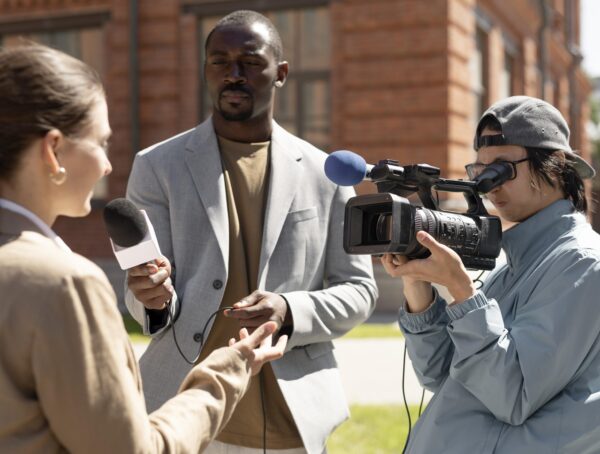When severe weather strikes, it often takes center stage in newsrooms for days or even weeks. From hurricanes to blizzards, reporters and meteorologists must work together to deliver accurate and timely information.
Ryan Vaughn, Chief Meteorologist from KAIT Region 8 News in Jonesboro, Arkansas, said weather is an area where local sources truly matter.
“According to a Pew Research Center study from January 2024, 68% of U.S. adults rely on local news sources for weather updates, making it the most popular local news topic,” Vaughn said.
When severe weather is imminent, it’s crucial for the newsroom and weather team to be aligned. Vaughn described the steps his team takes when preparing for what they call “First Alert Days.”
“We have a clear threshold for what we consider an alert day. For us, when the temperature drops to 20 degrees, that’s a big deal. But in Iowa, that might just be another Thursday in January,” he said, noting the importance of knowing your market.
Once an alert day is declared, the entire station gets involved. “We send out emails, update the weather team, and make sure the newsroom knows the plan. We even have live shots ready and send notifications through our app,” Vaughn said.
This communication ensures everyone, from reporters to production staff, understands their roles. Having established relationships in the community with local officials and emergency services is important, too, and makes coverage smoother and more accurate.
“When a tornado hits, you don’t have time to scramble for the sheriff’s number in a rural county,” Vaughn said.
Digital platforms have also introduced a new layer of interaction between meteorologists and the public. However, he warned of the dangers of misinformation, especially on social media, and encourages journalists to vet any suspicious content through their weather teams.
Vaughn also had some concrete advice on how to communicate weather information.
“I try to keep the message simple: here’s the timing, here’s the rain, here’s the wind. Agriculture is huge in our community, so 30-to-40 mile-per-hour winds can be a big deal during harvest season.”
He explained the importance of adjusting forecasts as the event unfolds. “We may start with a forecast of heavy rain but then realize we’ll get more wind than expected. Communicating those changes to the newsroom is key,” Vaughn said, partly so that newsroom managers know where to send the station’s reporters.
Vaughn said meteorologists can also help people understand their world.
“I love educating people on the science of weather. Whether a storm panned out or fizzled, explaining why things happened helps combat misinformation and builds credibility.”
Vaughan the key to success is readiness.
“You can have all the tools in the world—radar, weather cameras, social media—but being prepared and communicating clearly with your team and your audience will always be the most important part of the job.”








